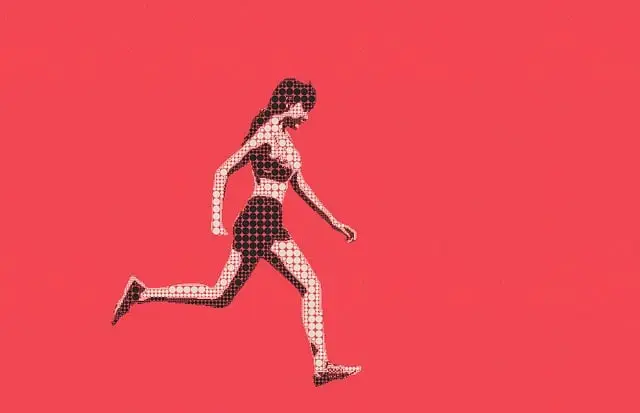Muscle relaxation through kratom, a Southeast Asian plant, is increasingly recognized for its potential benefits due to its active alkaloids mitragynine and 7-hydroxymitragynine. These compounds interact with opioid receptors in the brain to relax muscles and improve mental calmness. Different kratom strains, including Bali and Maeng Da, have different alkaloid profiles that can affect the experience of relaxation differently. To safely use kratom for muscle relaxation, it's crucial to select an appropriate strain and dosage, with a strong emphasis on personal sensitivity and cautious initial use. Safety is a priority, as concurrent use with other central nervous system suppressants should be avoided, and users with health issues or on medications should consult healthcare professionals. Responsible use of kratom can contribute to effective muscle relaxation and mental serenity when used within regulatory guidelines and in conjunction with other stress-relief practices like meditation and mindfulness. For those interested in the therapeutic potential of kratom for stress relief, it's important to stay informed on ongoing research that aims to clarify its mechanisms of action and effects on mental well-being.
Experiencing mental relaxation and serenity is pivotal in maintaining a balanced lifestyle amidst today’s fast-paced environment. This article delves into the multifaceted benefits of Kratom, a botanical substance known for its role in muscle relaxation with kratom. We explore its effects on mental well-being, particularly stress and anxiety relief, and offer guidance on integrating it safely into your daily routine as part of a comprehensive relaxation strategy. Join us to unravel the potential of Kratom in achieving tranquility and supporting overall serenity.
- Harnessing Kratom for Effective Muscle Relaxation: A Guide to Safe Usage
- The Role of Kratom in Mental Serenity: Understanding Its Impact on Stress and Anxiety
- Integrating Kratom into a Holistic Approach for Complete Relaxation and Serenity Support
Harnessing Kratom for Effective Muscle Relaxation: A Guide to Safe Usage

Kratom, a tropical evergreen tree native to Southeast Asia, has garnered attention in various health and wellness circles for its potential effects on muscle relaxation. When consumed responsibly, kratom can offer a host of benefits, including alleviating muscular tension and promoting a state of calmness. The active compounds found in kratom leaves, specifically mitragynine and 7-hydroxymitragynine, are believed to interact with the brain’s opioid receptors, which can lead to a reduction in pain perception and muscle relaxation effects.
To harness kratom for effective muscle relaxation, it is crucial to understand the correct dosage and strain that suits your individual needs. The strains of kratom—such as Bali, Maeng Da, and Indo—each possess different alkaloid profiles which can influence their efficacy in providing relaxation. It is important to approach kratom with caution, as it is a potent substance that requires careful consideration of its potential impacts on the body. Users should start with a low dose to gauge individual sensitivity before gradually increasing if necessary. Safety precautions include avoiding combination with other central nervous system depressants and consulting with a healthcare provider, especially for individuals with pre-existing health conditions or those taking prescription medications. By adhering to safe usage guidelines, kratom can be a valuable tool in achieving muscle relaxation and fostering serenity without the risk of dependence or adverse side effects when used appropriately. Always prioritize informed usage and heed regulatory guidelines regarding the consumption of kratom products.
The Role of Kratom in Mental Serenity: Understanding Its Impact on Stress and Anxiety

Kratom, a plant originating from Southeast Asia, has garnered attention for its potential effects on mental serenity and stress relief. The active compounds found in kratom, known as mitragynine and 7-hydroxymitragynine, interact with the brain’s opioid receptors, which can influence mood and promote a sense of calm. Users often report muscle relaxation with kratom, which is attributed to its analgesic properties. This physical aspect of relaxation complements its mental effects, providing a comprehensive approach to alleviating stress and anxiety. The strains of kratom vary in their alkaloid profiles, with certain strains like Bali or Maeng Da more commonly associated with promoting relaxation and reducing muscle tension. It’s important for individuals considering kratom as a means to enhance mental serenity to approach its use with caution, understanding the nuances of dosage and strain, and to consider consulting healthcare professionals, especially given the regulatory status of kratom in various regions. The impact of kratom on stress and anxiety is multifaceted; while some individuals find it beneficial for mental relaxation, research continues to explore its effects and potential mechanisms of action. Users have anecdotally reported that kratom helps modulate their response to stress, facilitating a more tranquil state of mind, which can be particularly valuable in environments or lifestyles characterized by high demands and pressure. As such, kratom’s role in mental serenity is an area of growing interest, with ongoing studies aiming to elucidate its therapeutic potential for stress and anxiety relief.
Integrating Kratom into a Holistic Approach for Complete Relaxation and Serenity Support

Incorporating Kratom into a holistic approach for mental relaxation and serenity support can be a nuanced yet effective strategy. Kratom, derived from the leaves of the Mitragyna speciosa tree, has been traditionally used in Southeast Asia for its various health benefits, including muscle relaxation with kratom. The alkaloids present in Kratom, such as 7-hydroxymitragynine and mitragynine, interact with the body’s opioid receptors, potentially offering a natural means to ease muscle tension and promote a sense of calm. When integrating Kratom into a wellness routine aimed at relaxation, it is crucial to select the appropriate strain and dosage, as different strains can have varying effects. For instance, Maeng Da and Bali strains are often favored for their relaxing properties, while Red Vein strains are also known for their soothing impact. It’s important to approach Kratom use with caution, considering its potential for interaction with prescription medications and the need for responsible sourcing to ensure safety and efficacy. A holistic regimen that includes Kratom should be complemented with other relaxation techniques such as meditation, deep-breathing exercises, and mindfulness practices to foster a comprehensive approach to mental serenity support. This multifaceted method not only targets the physical aspect of muscle relaxation with kratom but also addresses the psychological and emotional well-being, leading to a more harmonious state of being.
Integrating kratom into one’s routine, as outlined in our exploration of ‘Harnessing Kratom for Effective Muscle Relaxation: A Guide to Safe Usage,’ can offer significant benefits for muscle relaxation. This natural substance has been shown to support mental serenity and alleviate stress and anxiety, as detailed in ‘The Role of Kratom in Mental Serenity: Understanding Its Impact on Stress and Anxiety.’ By adopting a holistic approach that includes kratom, individuals can achieve comprehensive relaxation and serenity support. It is crucial to use kratom responsibly and within the confines of the law, ensuring one’s well-being is paramount. For those interested in exploring muscle relaxation with kratom, it is advisable to consult healthcare professionals and consider personal health conditions and legal regulations. With careful consideration and guidance, kratom can be a valuable addition to one’s path toward tranquility.






